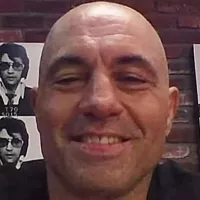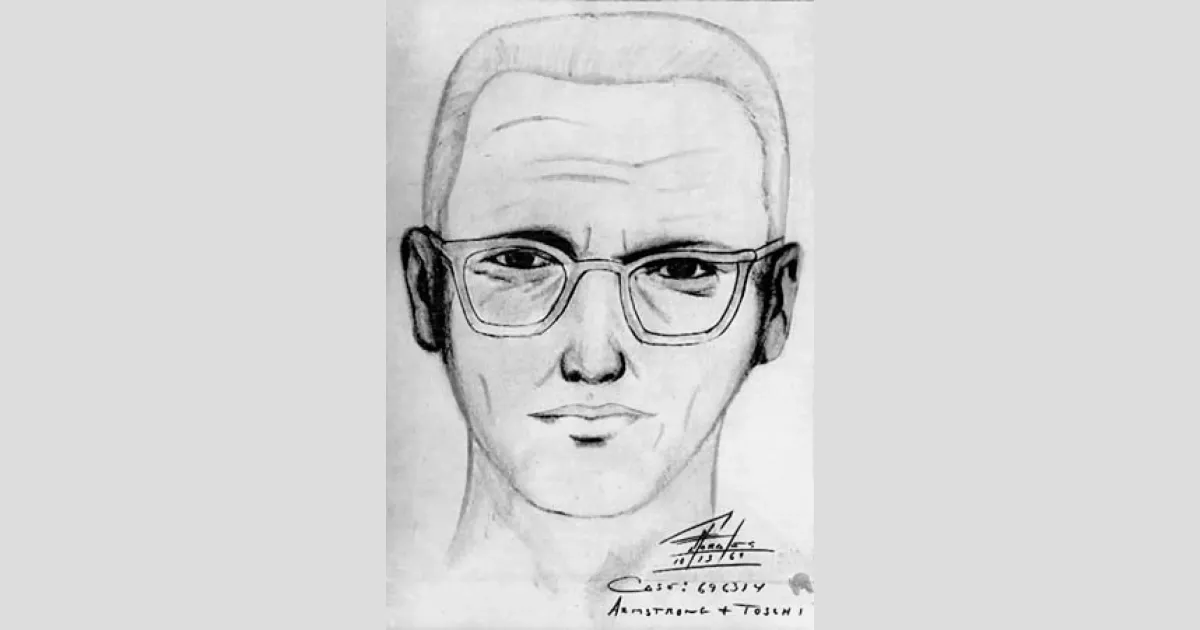The Zodiac Killer, an unidentified serial killer active in Northern California during the late 1960s, claimed five victims in the San Francisco Bay Area between December 1968 and October 1969. The killer, who targeted young couples and a lone cab driver, operated across diverse settings, leaving a chilling mark on American history. Despite extensive investigations and widespread public interest, the case remains unsolved, fueling amateur sleuthing and becoming a prominent fixture in popular culture.
1924: Zodiac's Literary Inspiration?
In the decoded 408-symbol cipher, the Zodiac Killer seemed to reference "The Most Dangerous Game," a 1924 short story.
1927: Doerr is born
Paul Doerr was born in 1927.
December 13, 1951: Allen Joins the Navy
Arthur Leigh Allen enlisted in the United States Navy on December 13, 1951.
April 4, 1958: Allen Faces Court-Martial
On April 4, 1958, Arthur Leigh Allen faced a special court-martial at Treasure Island for bringing a loaded .45 caliber pistol onto the naval base. He was ultimately found not guilty.
December 12, 1959: Allen Honorably Discharged from the Navy
Arthur Leigh Allen received an honorable discharge from the United States Navy on December 12, 1959, after serving for eight years.
1961: Kane arrested for voyeurism
Lawrence Kane was arrested for voyeurism in 1961.
April 10, 1962: Murder of Raymond Davis Investigated as Potentially Linked to Zodiac Killer
On April 10, 1962, cab driver Raymond Davis, 29, was murdered in Oceanside, California. Local historian Kristi Hawthorne suggested a possible link to the Zodiac Killer, prompting Oceanside police to investigate the connection. Notably, a day prior to the murder, a man believed to be the perpetrator had called the police claiming he would commit a crime they would be unable to solve.
1962: Kane diagnosed with impulse-control disorder
Lawrence Kane was diagnosed with impulse-control disorder following brain injuries sustained in a 1962 accident.
June 4, 1963: Murders of Robert Domingos and Linda Edwards Potentially Linked to Zodiac Killer
On June 4, 1963, Robert Domingos, 18, and Linda Edwards, 17, were shot and killed on a beach in Gaviota State Park. The Santa Barbara County Sheriff's Department later claimed in 1972 that the murders were the work of the Zodiac Killer, although this assertion has been met with skepticism.
1963: Gaikowski moves to the Bay Area
Richard Gaikowski moved to the Bay Area in 1963.
February 5, 1964: Murders of Johnny Ray and Joyce Ann Swindle Share Similarities with Zodiac's Modus Operandi
On February 5, 1964, newlyweds Johnny Ray and Joyce Ann Swindle, both 19, were fatally shot while walking along Ocean Beach in San Diego. The killer, positioned on a nearby cliff, shot them multiple times before approaching and shooting them both in the head. This case shares similarities with the Zodiac murders, including the use of a .22 caliber rifle and a head shot behind the ear. The theft of Johnny's Timex watch further links this case to the Cheri Jo Bates murder, where a similar watch was found.
October 30, 1966: Murder of Cheri Jo Bates Remains Unsolved, Potential Link to Zodiac Killer Investigated
On October 30, 1966, 18-year-old Cheri Jo Bates was found brutally murdered near the Riverside City College library. The attack involved beating and stabbing, and her car's distributor cap wires were pulled out. A man's Timex watch was found nearby. While the Zodiac connection is debated, the brutality and some details are similar to the Zodiac's MO.
December 1966: Poem Found at Riverside City College Potentially Linked to Zodiac Killer
In December 1966, a poem titled "Sick of living/unwilling to die" was discovered carved into a desk at Riverside City College library. The poem's style and handwriting were similar to the Zodiac's, and it was signed with initials believed to be "rh." This discovery further fueled speculation about the Zodiac's potential connection to Cheri Jo Bates' murder.
1966: Marshall lives in Riverside
Richard Marshall resided in Riverside in 1966.
1966: Possible Early Zodiac Murder
The Zodiac Killer claimed responsibility for the 1966 murder of Cheri Jo Bates in Riverside, California. However, this claim remains unconfirmed.
1966: Potential Early Connection to Ferrin
The photo of Darlene Ferrin with the unidentified man, potentially linked to the Zodiac Killer, is believed to have been taken in either 1966 or 1967.
April 30, 1967: Letters Sent to Bates' Family, Police, and Press Enterprise Raise Questions about Zodiac Connection
Six months after Cheri Jo Bates' murder, identical letters were sent to her father, the Press-Enterprise, and the Riverside police. The letters, written in a similar style to the Zodiac's, mentioned Bates' death and hinted at more to come.
June 8, 1967: Murders of Enedine Molina Martinez and Fermin Rodriguez Investigated for Potential Zodiac Connection
On June 8, 1967, Enedine Molina Martinez, 35, and Fermin Rodriguez, 36, were attacked and killed on Vallecitos Road in Alameda County. The couple was approached by a stranger who shot Rodriguez dead and abducted Martinez. She was later found dead near Sunol Regional Wilderness. The proximity of the murders to Pleasanton, where the Zodiac later mailed a letter, raises questions about a possible connection.
1967: Ross Sullivan Became a Person of Interest
In 1967, Ross Sullivan, a library assistant at Riverside City College, became a person of interest in the Zodiac Killer case due to a possible link with the Bates murder.
1967: Potential Early Connection to Ferrin
The photo of Darlene Ferrin with the unidentified man, potentially linked to the Zodiac Killer, is believed to have been taken in either 1966 or 1967.
March 1968: Allen Fired from Teaching Position
Arthur Leigh Allen lost his teaching job in March 1968 after being accused of sexual misconduct involving students. Despite generally positive feedback from acquaintances, he was also characterized as having an unhealthy interest in young children and harboring resentment toward women.
December 1968: First Zodiac Killings
The first murders attributed to the Zodiac Killer took place in December 1968, claiming the lives of Betty Lou Jensen and David Arthur Faraday in the San Francisco Bay Area.
December 20, 1968: The Murders of Jensen and Faraday
On December 20, 1968, high school students Betty Lou Jensen and David Arthur Faraday were found shot to death in their car on Lake Herman Road. This marked the beginning of the Zodiac Killer's reign of terror.
1968: Arthur Leigh Allen Fired from Teaching Position
In 1968, Arthur Leigh Allen was fired from his teaching position due to suspicions of child molestation.
1968: Kane arrested for prowling
Lawrence Kane was arrested for prowling in 1968.
January 1, 1969: Allen's Disturbing Comments Reported to Police
By January 1, 1969, Arthur Leigh Allen's friend, Donald Cheney, contacted the Manhattan Beach Police Department to report concerning statements made by Allen. Cheney revealed that Allen had expressed a desire to kill people, used the alias "Zodiac," and had modified a firearm with a flashlight for enhanced visibility at night.
August 1, 1969: Zodiac's Letters Claim Responsibility
On August 1, 1969, the Zodiac Killer sent three nearly identical letters to newspapers, claiming responsibility for the Lake Herman Road and Blue Rock Springs shootings. He expressed a desire to collect slaves in the afterlife.
August 1969: 408-Symbol Cipher Solved
The Zodiac Killer's 408-symbol cipher was solved in August 1969. The message contained misspellings and grammatical errors.
September 27, 1969: Lake Berryessa Attack
The Lake Berryessa attack, a key event in the Zodiac Killer case, occurred on September 27, 1969.
October 6, 1969: Allen Interviewed by Vallejo Police
On October 6, 1969, Arthur Leigh Allen was interviewed by Detective John Lynch of the Vallejo Police Department following a report placing him near the site of the Lake Berryessa attack on September 27, 1969. Allen claimed he was scuba diving at Salt Point on that particular day.
October 1969: Zodiac's Reign of Terror Continues
By October 1969, the Zodiac Killer had claimed the lives of five known victims in the San Francisco Bay Area. His last known murder during this time was Paul Stine.
October 22, 1969: Zodiac's Call to Talk Show
On October 22, 1969, someone claiming to be the Zodiac Killer called the "A.M. San Francisco" talk show. He demanded that lawyers F. Lee Bailey or Melvin Belli appear on the show. Belli agreed, and the caller, who identified himself as "Sam," engaged in a cryptic conversation.
1969: The Attack on Ferrin and Mageau
Darlene Ferrin and Michael Mageau were attacked by the Zodiac Killer in 1969. Ferrin was fatally wounded, while Mageau survived the shooting.
1969: Doerr's profile matches witness accounts
In 1969, Paul Doerr, at age 42 and 5'9" tall, matched the description provided by witnesses in the Zodiac Killer case.
1969: Researcher Suggests Zodiac's Cryptic Message Hints at San Diego Victims and Connection to Water
In 1969, the Zodiac sent a message that included the phrase "flyt 555 birds fly south," which researcher Howard Davis believes hints at victims in San Diego, as a United Flight 555 flew there daily. "Birds" could refer to planes or, in British slang, girls. Davis also points out a possible connection to water, given the locations of the Lake Berryessa, Santa Barbara, and Ocean Beach killings.
1969: Mageau Identifies Allen as his Attacker from 1969
Michael Mageau, who was shot by the Zodiac Killer in 1969, identified Arthur Leigh Allen as his attacker in July 1992.
1969: Zodiac's Letters and Ciphers
Starting in 1969, the Zodiac Killer began sending taunting letters and cryptograms to newspapers. He often signed them with his signature crosshair symbol.
1969: Zodiac's Ciphers and Taunting Messages
The Zodiac Killer began sending taunting letters and cryptograms, or ciphers, to regional newspapers in 1969. He claimed responsibility for the murders and threatened more violence.
February 21, 1970: Double Homicide of John Franklin Hood and Sandra Garcia Bears Similarities to Previous Unsolved Cases, Raising Suspicions of Zodiac Connection
On February 21, 1970, John Franklin Hood, 24, and Sandra Garcia, 20, were found murdered on East Beach in Santa Barbara. The vicious attack on Garcia and the use of a bone-handled fish knife found at the scene bear similarities to the murders of Domingos and Edwards in 1963 and the attack on Hartnell and Shepard at Lake Berryessa. These chilling resemblances to previous unsolved cases raise suspicion of the Zodiac Killer's involvement.
March 22, 1970: Kathleen Johns Encounter
On March 22, 1970, Kathleen Johns, a pregnant woman driving with her baby, had an encounter with a man who claimed her car had a loose wheel. After purportedly helping her, the wheel fell off, and the man offered her a ride.
March 25, 1970: Possible Zodiac Encounter in South Lake Tahoe
On March 25, 1970, a woman in South Lake Tahoe reported an encounter with a man matching the Zodiac's description. The man wanted to read her astrological chart and later visited her home to read another chart.
April 20, 1970: Zodiac Letter with Cipher and Bomb Threat
On April 20, 1970, the Zodiac sent a letter containing a 13-character cipher, still unsolved, and a bomb threat targeting a school bus. He denied involvement in a recent bombing of an SFPD station.
April 28, 1970: Zodiac Threatens Bus Bombing
On April 28, 1970, the Zodiac Killer sent a greeting card to the Chronicle, threatening to bomb a bus and demanding the publication of his writings and the use of "Zodiac buttons."
June 19, 1970: Murder of Richard Radetich
On June 19, 1970, Sergeant Richard Radetich was fatally shot while issuing a parking ticket in San Francisco. While the Zodiac alluded to involvement, no direct evidence connects him to the crime.
June 26, 1970: Zodiac Claims Shooting and Expresses Displeasure
In a letter dated June 26, 1970, the Zodiac expressed disappointment over the lack of "Zodiac buttons" and claimed responsibility for shooting a man in a parked car, possibly referring to the unsolved murder of SFPD Sergeant Richard Radetich.
July 24, 1970: Zodiac Claims Kathleen Johns Abduction
On July 24, 1970, the Zodiac sent a letter claiming responsibility for the abduction of Kathleen Johns, which had occurred four months prior.
July 26, 1970: Zodiac Sends Letter with Torture Threats and Cipher
The Zodiac sent a letter on July 26, 1970, containing threats of torture, a cipher referencing radians, and an updated victim count.
September 6, 1970: Disappearance of Donna Lass
Donna Lass, a nurse at the Sahara Tahoe hotel, vanished on September 6, 1970. Her employer and landlord received calls falsely claiming she had left town. Her car was found, but she was never located.
October 7, 1970: Zodiac Sends "13 Hole Punch Card"
On October 7, 1970, the Chronicle received a card with a message made from newspaper clippings, thirteen punched holes, and a cross drawn in what was believed to be blood.
October 1970: Zodiac Claims Future Killings by Rope
In October 1970, the Zodiac stated his intention to commit future murders by strangulation.
October 27, 1970: Zodiac Sends Halloween Card Threat
The Zodiac sent a Halloween card on October 27, 1970, with a threatening message for Chronicle reporter Paul Avery, leading to increased security measures and public concern.
1970: Doerr advocates for using 1¢ stamps
In 1970, Paul Doerr expressed his support for using only 1¢ stamps as a form of protest against the Post Office. Interestingly, the Zodiac Killer used the same type of stamps on some of his letters.
1970: Handwriting Expert Links Riverside Poem to Zodiac Killer
In 1970, Sherwood Morrill, a leading questioned documents examiner in California, linked the poem found at Riverside City College to the Zodiac Killer based on handwriting analysis. This further fueled speculation about the Zodiac's connection to the murder of Cheri Jo Bates.
March 13, 1971: Zodiac's Pleasanton Letter
On March 13, 1971, the Zodiac Killer sent a letter postmarked from Pleasanton, California, deviating from his usual San Francisco postmarks.
March 1971: Zodiac Sends Letter from Location Near 1967 Double Homicide, Fueling Speculation of Connection
In March 1971, the Zodiac Killer mailed a letter to the Los Angeles Times from Pleasanton, California. This location's proximity to the June 8, 1967 murders of Enedine Molina Martinez and Fermin Rodriguez fueled speculation of a possible connection between the cases.
March 22, 1971: "Peek Through the Pines" Postcard
On March 22, 1971, a postcard believed to be from the Zodiac, surfaced, potentially claiming responsibility for Donna Lass's disappearance. The postcard, dubbed the "Peek Through the Pines" card, featured a Lake Tahoe scene and cryptic messages.
1971: Allen Interviewed Again by Police
Arthur Leigh Allen was interviewed by police again in 1971 following the report made by his friend Donald Cheney.
1971: Gaikowski committed to Napa State Mental Hospital
Richard Gaikowski was involuntarily committed to Napa State Mental Hospital in 1971 and diagnosed with a mental illness.
1971: "The Anarchist Cookbook" is published
The Anarchist Cookbook, containing the ANFO bomb formula, was published in 1971.
September 1972: SFPD Obtains Search Warrant for Allen's Residence
In September 1972, the San Francisco Police Department (SFPD) obtained a search warrant for Arthur Leigh Allen's residence as part of their investigation into his potential connection to the Zodiac Killer case.
1972: Santa Barbara Authorities Link 1963 Double Homicide to Zodiac Killer
In 1972, the Santa Barbara County Sheriff's Department publicly linked the murders of Robert Domingos and Linda Edwards from June 4, 1963, to the Zodiac Killer. This claim was based on their investigation, though they anticipated skepticism.
1972: Start of the Santa Rosa Hitchhiker Murders
The "Santa Rosa hitchhiker murders," claiming the lives of several female hitchhikers, began in 1972.
1973: Zodiac Resurfaces with Letter Praising "The Exorcist"
After nearly three years of silence, the Zodiac sent a letter in 1973, criticizing a columnist, praising the film "The Exorcist," and providing an updated victim count.
1973: Cryptic Letter Sent to Albany Times Union
In 1973, the Albany Times Union received a letter with the Zodiac symbol, claiming the writer would kill again and providing a cryptic message that was later deciphered.
1973: Release of "Badlands" Movie
The movie "Badlands," which drew criticism for its portrayal of violence, was released in 1973.
1973: End of the Santa Rosa Hitchhiker Murders
The string of "Santa Rosa hitchhiker murders" ended in 1973.
January 29, 1974: "Exorcist Letter" and Potential Santa Rosa Connection
The Zodiac's "Exorcist letter", sent on January 29, 1974, contained a symbol potentially linking him to the "Santa Rosa hitchhiker murders." Similarities in modus operandi and the symbol fueled suspicions.
February 14, 1974: Letter Regarding Symbionese Liberation Army
On February 14, 1974, a letter was sent to the Chronicle commenting on the Symbionese Liberation Army's initials, but the handwriting was not confirmed to be the Zodiac's.
May 8, 1974: Letter Criticizing "Badlands" Movie
On May 8, 1974, the Chronicle received a letter criticizing the movie "Badlands" for glorifying murder, with similarities to previous Zodiac communications.
July 8, 1974: Letter Signed "The Red Phantom"
The Chronicle received another letter on July 8, 1974, signed "The Red Phantom," criticizing a columnist and raising questions about its potential connection to the Zodiac.
September 27, 1974: Arrest of Arthur Leigh Allen
On September 27, 1974, Arthur Leigh Allen, a suspect in the Zodiac case, was arrested on child molestation charges.
December 27, 1974: Christmas Card to Donna Lass's Sister
On December 27, 1974, Donna Lass's sister received a Christmas card with a message possibly linked to the Zodiac. The card featured snowy trees and a cryptic note, raising further questions about Donna's disappearance.
1974: Allen Arrested for Lewdness
Arthur Leigh Allen was arrested in 1974 on charges of lewdness with a nine-year-old boy, a serious offense that would have significant implications for his future.
1974: Doerr hints at past killings
Paul Doerr, in a 1974 letter to the journal Green Egg, suggested that he had killed people in the past. This statement, though potentially not meant for publication, was included as the journal had a policy of publishing letters in their entirety.
1974: Zodiac's Final Confirmed Letter
The Zodiac Killer's last confirmed letter was sent in 1974. He claimed to have killed 37 victims, a number much higher than previously believed.
1974: Zodiac's Communication Ends
The Zodiac Killer's reign of terror seemingly ended in 1974, marked by the absence of further confirmed letters or ciphers.
March 14, 1975: Arthur Leigh Allen's Guilty Plea
Arthur Leigh Allen pleaded guilty to child molestation charges on March 14, 1975, and was subsequently imprisoned.
1976: Letters Praising David Toschi Found to Be Forged
In 1976, letters praising investigator David Toschi's work on the Zodiac case were discovered to have been written by Toschi himself, leading to his removal from the investigation.
May 13, 1977: Allen Receives Suspended Sentence and Probation
On May 13, 1977, Arthur Leigh Allen received a suspended prison sentence and was placed on five years of felony probation following a guilty plea in a lewdness case involving a nine-year-old boy. He had undergone pre-sentencing evaluation and treatment at Atascadero State Hospital.
1977: Arthur Leigh Allen's Release from Atascadero State Hospital
Arthur Leigh Allen was released from Atascadero State Hospital in late 1977.
1978: Letter to Armistead Maupin Raises Suspicions
A 1978 letter sent to columnist Armistead Maupin, claiming to be from the Zodiac, raised suspicions of Toschi's involvement, which he and the SFPD denied.
1981: Researcher Deciphers Radian Cipher
In 1981, Zodiac researcher Gareth Penn deciphered the radian cipher from the July 26, 1970, letter, revealing a connection to the locations of two Zodiac attacks.
1982: Allen Completes Probation
Arthur Leigh Allen successfully completed his probation in 1982, marking the end of his formal legal obligations stemming from his 1977 conviction.
1986: Discovery of Skull Near Emigrant Gap
In 1986, a skull was discovered near Emigrant Gap, California.
1987: Detective Narlow's Retirement
Napa County detective Ken Narlow, who was heavily involved in the Zodiac Killer case from the beginning, retired in 1987.
1989: Marshall acknowledges similarities to Zodiac
Richard Marshall, in 1989, acknowledged the similarities between himself and the Zodiac Killer but denied any involvement in the crimes.
1990: Possible Zodiac Communication Sent
A Christmas card believed to be connected to the Zodiac case was sent in 1990, potentially indicating the killer's survival and continued activity.
February 1991: Vallejo Police Search Allen's Residence
In February 1991, Vallejo police executed another search warrant at Arthur Leigh Allen's residence in connection with the ongoing Zodiac Killer investigation.
1991: Evidence Linking Allen to the Zodiac Case
In 1991, evidence emerged that seemed to link Arthur Leigh Allen to the Zodiac Killer case. This included a letter sent to the Riverside Police Department from the killer of Cheri Jo Bates, typed on a Royal typewriter with Elite type - the same brand discovered during a search of Allen's residence that year. Further connections included Allen's ownership of a Zodiac Sea Wolf wristwatch, mirroring the Zodiac Killer's use of the same logo in his letters, and the fact that both Allen and the Zodiac wore size 10 1/2 shoes.
July 1992: Mageau Identifies Allen, Others Disagree
In July 1992, Michael Mageau, a survivor of one of the Zodiac Killer's attacks, identified Arthur Leigh Allen as his assailant from a photo lineup. However, retired police officer Donald Fouke, who believed he saw the Zodiac fleeing the scene of the Paul Stine murder, disputed this identification based on physical discrepancies. Additionally, Nancy Slover, who received a phone call from the Zodiac after the Mageau/Ferrin shooting, stated that Allen's voice did not match that of the caller.
1992: Arthur Leigh Allen Dies
Arthur Leigh Allen, a former elementary school teacher and the only individual officially named a suspect by police in the Zodiac Killer case, passed away in 1992.
1992: Police Seize Property from Allen's Residence After Death
Two days after Arthur Leigh Allen's death in 1992, Vallejo police executed another search warrant at his residence, seizing property as part of their ongoing investigation into his potential connection to the Zodiac Killer case.
1994: Bevilacqua testifies at Pacciani trial
Joseph Bevilacqua testified in 1994 at the trial of Pietro Pacciani, a suspect in the Monster of Florence case.
1997: Zodiac Killer Inspires Kobe Child Murders
The Zodiac Killer's case, with its cryptic messages and unsolved murders, cast a long shadow, even inspiring crimes in 1997 like the Kobe child murders in Japan.
2001: South Lake Tahoe Police Investigate Lass Case
In 2001, South Lake Tahoe police began investigating a possible link between Donna Lass's disappearance and the Zodiac.
2002: DNA Evidence Excludes Allen and Cheney
In 2002, the San Francisco Police Department (SFPD) developed a partial DNA profile from saliva found on stamps and envelopes associated with the Zodiac Killer's letters. They compared this profile to DNA samples from Arthur Leigh Allen and his former friend, Don Cheney, who was the first to suggest Allen might be the Zodiac. Neither Allen's nor Cheney's DNA matched the profile, effectively excluding them as potential sources of the DNA found on the letters.
April 2004: SFPD Declares Zodiac Case "Inactive"
The San Francisco Police Department officially declared the Zodiac case "inactive" in April 2004 due to limited resources and a heavy caseload.
2004: Reopening of Radetich Investigation
In 2004, the San Francisco Police Department reopened the investigation into the murder of Sergeant Richard Radetich.
2004: Gaikowski dies
Richard Gaikowski, a suspect in the Zodiac Killer case, died in 2004.
2004: Case Goes Cold, Then Reopens
The San Francisco Police Department officially declared the Zodiac Killer case "inactive" in 2004. However, it was reopened sometime before 2007.
March 3, 2007: Christmas Card and Keys Re-discovered
A Christmas card postmarked 1990 and containing a photocopy of keys was discovered in the Chronicle's archives in 2007, renewing interest in the Zodiac case.
March 2007: Zodiac Case Reopened
The Zodiac case was reopened by the SFPD sometime before March 2007, likely prompted by the discovery of new evidence.
2007: Over 2,500 Potential Zodiac Suspects
In 2007, The Guardian reported that over 2,500 individuals were considered potential Zodiac suspects, with at least six names deemed credible.
2007: Search for Donna Lass's Body
In 2007, acting on a tip from an amateur sleuth, police searched an area in South Lake Tahoe for Donna Lass's body, but the search proved unsuccessful.
2007: Allen Considered a Likely Suspect by Detectives
In 2007, author Robert Graysmith, who had profiled Allen as a potential suspect in his book "Zodiac," noted that several detectives involved in the case considered Allen to be the most probable suspect.
2007: Conflicting Evidence and Opinions on Allen's Involvement
In 2007, conflicting accounts and evidence surrounding Arthur Leigh Allen's potential involvement in the Zodiac Killer case came to light. Dave Toschi's daughter revealed her father's belief in Allen's guilt, while actor Mark Ruffalo, who portrayed Toschi in the film "Zodiac," highlighted the lack of concrete evidence. Retired police handwriting expert Lloyd Cunningham dismissed handwriting and DNA evidence linking Allen to the crimes, further deepening the mystery.
2007: Fouke Disputes Mageau's Identification
In the 2007 documentary "His Name Was Arthur Leigh Allen," retired police officer Donald Fouke disputed Michael Mageau's identification of Allen as the Zodiac Killer, citing physical discrepancies between Allen and the man he believed he saw fleeing the scene of the Paul Stine murder.
2007: Zodiac Case Remains Open
The Zodiac Killer case remained open in 2007, with multiple law enforcement agencies still involved in the investigation.
2007: Release of "Zodiac" Film Renews Public Interest
The release of the movie "Zodiac" in 2007, directed by David Fincher and based on Robert Graysmith's books, brought renewed public interest to the Zodiac Killer case. The film, while praised for its research, also sparked debate about its accuracy and potential influence on the public's perception of the investigation.
2008: Marshall dies
Richard Marshall, a potential suspect in the Zodiac Killer case, died in 2008.
2009: MysteryQuest investigates Gaikowski
An episode of the History Channel television series MysteryQuest aired in 2009, featuring an investigation into Richard Gaikowski as a potential Zodiac Killer. The episode included a disguised interview with "Goldwatcher," a former coworker of Gaikowski who had accused him of being the Zodiac.
2009: SFPD Investigates 2,500 Zodiac Suspects
By 2009, the San Francisco Police Department (SFPD) had investigated an estimated 2,500 suspects in connection with the Zodiac Killer case.
2010: Mysterious Photo Surfaces
A photo of Darlene Ferrin with an unidentified man, bearing a resemblance to the Zodiac Killer's composite sketch, surfaced in 2010.
2010: Kane dies
Lawrence Kane, a Zodiac Killer suspect, died in 2010.
2010: Evidence Against Allen Deemed "Negative"
Retired San Francisco Police Department (SFPD) Inspector Dave Toschi, who had been a lead investigator on the Zodiac case, stated in 2010 that all the evidence gathered against Arthur Leigh Allen ultimately proved inconclusive.
2011: America's Most Wanted Episode
In 2011, an episode of "America's Most Wanted" featured the Zodiac Killer case. Police revealed their belief that the photo of Ferrin and the unidentified man was taken in San Francisco between 1966 and 1967.
2014: Poste investigated as a suspect
Gary Poste came under investigation as a potential Zodiac Killer suspect as early as 2014 by TV news anchor Dale Julin.
2014: New Theory: Earl Van Best Jr. as Zodiac Killer
In 2014, a new theory emerged regarding the identity of the Zodiac Killer, as presented by Gary Stewart and Susan Mustafa in their book, "The Most Dangerous Animal of All: Searching for My Father... and Finding the Zodiac Killer." Stewart claimed that his search for his biological father, Earl Van Best Jr., led him to conclude that Van Best was the Zodiac. This theory was based on circumstantial evidence, including a police sketch resembling Van Best, partial fingerprint and handwriting matches, encrypted messages in Zodiac letters, and partial DNA connections.
2016: FBI allegedly considers Poste a suspect
According to an alleged FBI whistleblower, the bureau had been considering Gary Poste as a suspect in the Zodiac Killer case since 2016.
2016: Riverside Police Claim Knowledge of Bates' Killer but Lack Evidence for Arrest
In 2016, the Press Enterprise reported that the Riverside police claimed to know the identity of Cheri Jo Bates' killer but lacked sufficient evidence to make an arrest. This statement further complicates the investigation and the potential link to the Zodiac Killer.
2016: Author of Cheri Jo Bates Letters Contacts Investigators
In 2016, the person who wrote letters about the Cheri Jo Bates case in 1967 reached out to investigators. This contact ultimately led to their identification and the revelation that the letters were a hoax.
May 2017: Amicone begins investigating Bevilacqua
Italian journalist Francesco Amicone began investigating Joseph Bevilacqua, a retired Army sergeant, as a suspect in both the Zodiac and Monster of Florence cases in May 2017.
2017: Julin interviews Poste
Dale Julin interviewed Gary Poste in 2017, during which Poste allegedly confessed to being the Zodiac Killer. However, this information, presented in court affidavits filed by Julin, was deemed unverifiable by The Union Democrat.
2017: Rumors about Poste as a suspect investigated
In 2017, rumors about Arthur Leigh Allen as a Zodiac Killer suspect were investigated by the San Francisco Police Department, who visited his jail but declined to say if they interviewed him.
May 2018: Vallejo Police Attempt DNA Extraction
In May 2018, the Vallejo Police Department announced efforts to extract DNA from stamps used by the Zodiac for comparison with GEDmatch, hoping for a breakthrough similar to the Golden State Killer case.
2018: Gary Francis Poste, Suspect Named by Case Breakers, Dies
Gary Francis Poste, the man identified by the Case Breakers as the Zodiac Killer, died in 2018.
December 2019: No DNA Results Reported
As of December 2019, no results from the DNA analysis of the Zodiac's stamps had been reported.
December 5, 2020: Zodiac Killer's 340-character Cipher Decrypted
On December 5, 2020, a 340-character cipher sent by the Zodiac Killer, known as "Z-340," was finally deciphered after 51 years by an international team. The decrypted message revealed the Zodiac denying being "Sam" from a TV show, and claiming he wasn't afraid of the gas chamber.
December 2020: 340-Symbol Cipher Decoded
In December 2020, the Zodiac Killer's 340-symbol cipher was finally decoded, potentially offering new clues to the unsolved case.
2020: DNA Analysis Identifies Author of Cheri Jo Bates Letters, Clearing Them as Zodiac Suspect
In 2020, DNA analysis confirmed the identity of the individual who sent the letters concerning the Cheri Jo Bates case in 1967. This identification exonerated them from being the Zodiac Killer and confirmed the letters were a hoax.
2020: Stewart's Claims Debunked in Documentary
In 2020, Gary Stewart's claims regarding his father, Earl Van Best Jr., being the Zodiac Killer were investigated in an FX Network documentary series adapted from Stewart's book. Private investigator Zach Fechheimer, hired by the producers, discovered that Stewart had manipulated a police report and that Van Best Jr. was in Europe during some of the Zodiac's known activities. Experts also discredited the DNA, handwriting, and fingerprint evidence presented by Stewart. The producers' decision to withhold these findings until the end of production raised ethical concerns. Director Kief Davidson expressed skepticism about Van Best Jr.'s involvement, while executive producer Ross Dinerstein remained unsure.
2020: Decades Later, a Cipher is Solved
In 2020, one of the Zodiac Killer's ciphers, unsolved for decades, was finally cracked.
2020: Another Cipher Solved
In a significant breakthrough, another of the Zodiac Killer's ciphers was solved in 2020.
2020: FBI Investigation Continues
The FBI's investigation into the Zodiac case remained ongoing as of 2020.
August 2021: Author of Letters Regarding Cheri Jo Bates Case Comes Forward, Ruled Out as Zodiac Killer
In August 2021, the Riverside Police Department announced that the author of the letters sent in 1967 regarding the Cheri Jo Bates case had come forward in 2016 and was identified through DNA analysis in 2020. The individual, who admitted to writing the letters as a troubled teenager seeking attention, was cleared of any involvement in Bates' murder and confirmed to not be the Zodiac Killer.
2021: "Chinese Zodiac Killer" Emerges in New York
In 2021, a new wave of fear was ignited when threatening letters signed by the "Chinese Zodiac Killer" were sent to media outlets in New York, highlighting the enduring influence of the Zodiac Killer persona.
2021: Ziraoui claims to solve Z13 cipher
Fayçal Ziraoui, a French-Moroccan business consultant, claimed to have solved the Z13 cipher in 2021. His solution pointed to "Kayr," which he suggested was a misspelling of "Kaye," potentially implicating Lawrence Kane. However, his claim was disputed.
2021: Zodiac-like Symbol Found in Hell Hole Reservoir
In 2021, a rock formation resembling the Zodiac's symbol was found in the Sierra Nevada's Hell Hole Reservoir, though it is not believed to be directly related to the case.
2021: Case Breakers Identify Gary Francis Poste as Zodiac Killer
In 2021, the Case Breakers, a group of former law enforcement officials, academics, and independent investigators, claimed to have identified the Zodiac Killer as Gary Francis Poste, who had died in 2018. They also alleged that Poste was responsible for the murder of Cheri Jo Bates.
2021: Italian authorities dismiss Bevilacqua investigation
Italian authorities ended their investigation into Joseph Bevilacqua's potential involvement in the Monster of Florence case in 2021.
December 23, 2022: Bevilacqua dies
Joseph Bevilacqua, a suspect in both the Zodiac and Monster of Florence cases, died on December 23, 2022.
2022: Kobek publishes "How to Find Zodiac"
Author Jarrett Kobek published "How to Find Zodiac" in 2022, naming Paul Doerr as a potential suspect in the Zodiac Killer case.
2022: The Chronicle Dubs Zodiac Case as "Most Famous Unsolved Murder Case"
By 2022, the Zodiac Killer case was widely regarded as one of the most famous unsolved murder cases in American history, attracting significant international attention and inspiring numerous investigations, books, documentaries, and websites dedicated to deciphering the Zodiac's codes.
2022: Numerous Suspects Named Annually
Richard Grinell, who manages the Zodiac Cyphers website, stated in 2022 that an estimated 50 to 100 suspects are named each year in connection to the Zodiac Killer case.
November 2023: DNA profile sent to US authorities
A DNA profile of Joseph Bevilacqua was sent to US authorities investigating the Zodiac case in November 2023.
2023: Identification of Donna Lass's Remains
In 2023, DNA analysis confirmed that the skull found in 1986 belonged to Donna Lass. The cause of death and potential connection to the Zodiac remain unclear.
2023: Case Breakers claim FBI considered Poste a suspect
In 2023, the Case Breakers claimed that an FBI whistleblower informed them that the bureau had been considering Poste as a suspect since 2016.
2024: Ongoing Investigation into Lass Case
As of 2024, the investigation into Donna Lass's disappearance continues, with no confirmed connection to the Zodiac established.
2024: Julin publishes "Catching Zodiac"
Dale Julin's book exploring his investigation into Gary Poste as the Zodiac Killer, titled "Catching Zodiac," was published in 2024. The Case Breakers, another group investigating the case, based some of their research on Julin's findings.
Mentioned in this timeline

A typewriter is a mechanical or electromechanical machine used for...
California is a U S state on the Pacific Coast...

Christmas is an annual festival celebrated on December th commemorating...
The Guardian is a British daily newspaper founded in as...

San Francisco is a major commercial financial and cultural hub...
Japan is an East Asian island country situated in the...
Trending

3 minutes ago John Cena discusses China apology and Taiwan comments on Joe Rogan's podcast.
4 minutes ago CD Projekt Dashes Cyberpunk 2077 Anniversary Teaser Hopes, Confirms No New Content
1 hour ago Battery prices decreased, electric grid more reliable: Storage industry crushes 2025 goals.
2 hours ago Discord Checkpoint 2025: A Spotify Wrapped-like Recap for Gaming Habits in League of Legends.
2 hours ago Mortgage Rates Fall: Refinance Opportunities and Lender Options Emerge in December 2025

3 hours ago Dave Chappelle Heckled in Edmonton: Show Interrupted, Future Performances in Doubt.
Popular
Matt and Ross Duffer known as the Duffer Brothers are...
Aftyn Alyssa Behn is an American politician currently serving as...

XXXTentacion born Jahseh Dwayne Ricardo Onfroy was a controversial yet...

Lane Kiffin is an American football coach currently serving as...

Candace Owens is an American conservative political commentator and author...

Ilhan Omar is an American politician currently serving as the...
